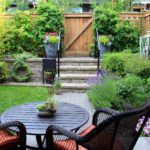Guide to Retaining Walls
Simply put, a retaining wall is a landscape feature that holds the earth in place. It prevents soil on landscape slopes from sliding down. However, retaining walls can be simple or ornate when it comes to their construction. These features may play an important function for property owners but they can also add tremendous visual appeal to the landscape. Today, there are many choices for retaining walls when it comes to their style and materials. Here, we’ll discuss everything you need to know about these eye-catching landscape features.
Types of Retaining Walls
Most property owners opt for either retaining walls that are mortared in place such as a concrete wall, mortared in part with concrete or stone blocks, or created with mortarless modular blocks. Cast in place walls are relatively quickly to install and can be stylized with various veneers such as brick or stone. Walls that are constructed from blocks and mortared into place take time to create but they’re a classic option. There are also newer products in the marketplace that feature interlocking blocks that require no mortar. These come in different colors and finishes and are easier than mortared walls to construct.
Constructing Retaining Walls
Retaining wall construction can be a DIY endeavor but it’s often best left to landscaping pros. These features often require some specialized construction and engineering skills. Retaining walls are often crafted with ‘step-back construction’ in order to ensure their stability and durability. The soil behind the wall places considerable pressure on the wall, so it’s vital to build it with that pressure in mind or the wall is unlikely to last long.
Features of retaining wall construction include its foundation, which is often created with a trench filled with gravel. Larger walls may require footing for extra support. Concrete should be poured below frost level to create a robust foundation that will give the wall the support it needs. Once the wall is constructed, it will require backfill directly behind it. Backfill is ideally sand or gravel; unlike soil, these materials do not retain water or swell, so they help reduce pressure on the wall.
Finally, drainage must be considered. Walls with sand or gravel backflow usually don’t require additional drainage measures. However, if you have a solid wall, you may want to install drainage soils to ensure that groundwater doesn’t build up and cause pressure on your wall or cause root rot for your plants.
Landscaping Considerations
Depending on your taste, you may wish to garden the earth behind your retaining wall for added visual appeal or choose a low-maintenance planting such as no-mow ornamental grass. Some property owners simply extend their lawn to their retaining wall to create a neat, trim appearance for their landscape. You can work with your landscaping service to develop the ideal plan for your setting.
Every Season Landscaping and Lawn Care specializes in a wide range of landscaping solutions, including hardscape features such as retaining walls. We have the experience and expertise to construct these features for any type of landscape. Contact us to learn more.



